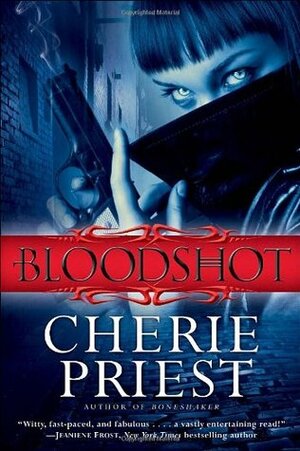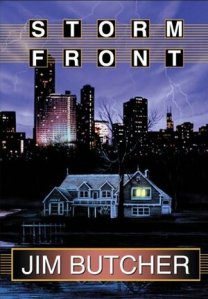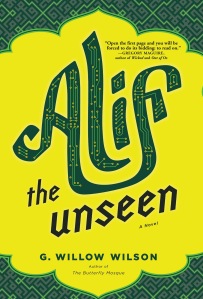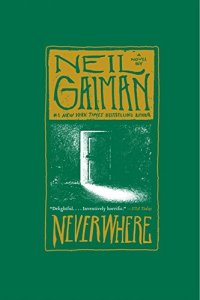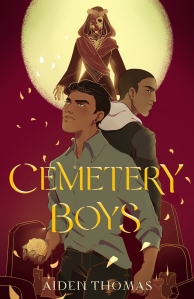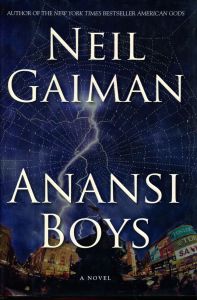Title: Hellbent
Series: Cheshire Red Reports #2
Author: Cherie Priest
Genre: Urban Fantasy
Trigger Warnings: Death, blood, injury, murder, mental illness, confinement, ableism, blood drinking, parent death (mentions), severe weather, excrement (mentions)
Spoiler Warning: This book is second in a series, and reading beyond this point will expose you to spoilers of the previous book, Bloodshot.
Back Cover:
Vampire thief Raylene Pendle doesn’t need more complications in her life. Her Seattle home is already overrun by a band of misfits, including Ian Stott, a blind vampire, and Adrian deJesus, an ex-Navy SEAL/drag queen. But Raylene still can’t resist an old pal’s request: seek out and steal a bizarre set of artifacts. Also on the hunt is a brilliant but certifiably crazy sorceress determined to stomp anyone who gets in her way. But Raylene’s biggest problem is that the death of Ian’s vaunted patriarch appears to have made him the next target of some blood-sucking sociopaths. Now Raylene must snatch up the potent relics, solve a murder, and keep Ian safe – all while fending off a psychotic sorceress. But at least she won’t be alone. A girl could do a lot worse for a partner than an ass-kicking drag queen – right?
Review:
For as lackluster as this back cover is, I enjoyed Bloodshot enough to be excited about reading this book. I’m not generally an urban fantasy fan, but I found Raylene a well-done snarky protagonist and surprisingly well-rounded for a badass vampire thief, and the whole book to be more action thriller than urban fantasy mystery. It’s like urban fantasy lite, and I enjoyed it.
This book, though, leans heavier into the urban fantasy elements of the series. Raylene interacts with multiple vampire Houses, she’s hunting down some magical artifacts, and of course there’s the whole sorceress thing. But despite that, it didn’t really have an urban fantasy feel to me. I think that’s because every other urban fantasy I’ve read has had some variety of romance (often a somewhat unhealthy romance), and even though the back cover tries to imply that Raylene and Adrian are going to get together, they are most definitely not. And I think having the first book be so light on the urban fantasy elements helped ease me in, as well.
It’s a general tendency of sequels to be just not quite as good as the first book. That’s not really the case here. Bloodshot and Hellbent are both well-written, well-plotted, interesting, and enjoyable to read. Raylene herself is still great. She is, as I’ve said, remarkably more full and well-written than I anticipated. Her snark works, she’s experiencing some growth, and I love her dynamic with the unique cast of characters she’s surrounded with. She’s dynamic and quite fun to read about, and she’s a large part of the reason why I’ve enjoyed this series.
Plot-wise, there’s a lot happening, but it’s balanced very well and all of it is enjoyable. In many ways, it exactly the same plot as last book – someone wants Raylene to obtain something, but someone else wants that to not happen. Last time, Ian wanted her to get some records and the government didn’t want her to do that. This time, she gets a job to steal some magical bones, and the sorceress who also wants them doesn’t want her to do that. But this one manages to make itself unique in a few ways: First, a single slightly-crazy sorceress uses much different Raylene prevention methods than the federal government. And second, this book leans harder into the urban fantasy aspects of the story. It becomes clear that there’s other supernatural creatures than vampires in this world (although none of them actually show up on-page, they’re mentioned). Raylene interacts with people from three different vampire Houses, and actually visits one House’s house. And there’s a sort-of subplot that’s a little bit trying to figure out who murdered a particular guy (although figuring out the answer requires less “figuring out who did it” and more “walking into the correct room while doing something else,” so it doesn’t really count as a mystery in my mind).
And now that I’ve finished expressing that I found this book quite good and an enjoyable read, I want to comment on the unusual aspect of it – which is that it doesn’t at all continue the plot from Bloodshot. At the end of that book, the main plot points were resolved, but there was still one antagonist on the loose who needed to be hunted down and dealt with. The implication was that this was the setup for the rest of the series, and Raylene and company would be working on tracking down and doing something (possibly murder) to the rest of the people involved in Project Bloodshot. But besides a mention at the beginning of this book that the events of the last book happened and there was at least one guy still out there, nothing in this book had anything to do with any of that.
This wouldn’t be a problem if there were more books. But there are only two Cheshire Red Reports books, and this one is over a decade old. Cherie Priest has said on her website that she may in the future write a third book in the series, but at this point there’s just the two. Which leaves the whole thing feeling incomplete. Sure, this book wrapped up really well, even resolved a few sub-plots from book one, and left the characters in an overall good place to end a series. But that one major thread left over from book one – that the guy behind Project Bloodshot is still on the loose and Raylene and company intend to hunt him down – is really bothering me. Even just one more book to resolve that would make this feel more complete as a series. Or it’s possible that I’m the only one bent out of shape by that one unresolved thing and everybody else is fine with the way it ended. Who knows.
This complaint really has nothing to do with this book, which I very much enjoyed. This series just feels incomplete with that one major thread left hanging, and I would love to see a third book come out at some point to resolve it. And if Cherie Priest ever decides to take up this series again and write more than one additional book, that works for me, too – I enjoy this series and would be happy to spend a few more books in it.
The Cheshire Red Reports:
- Bloodshot
- Hellbent


